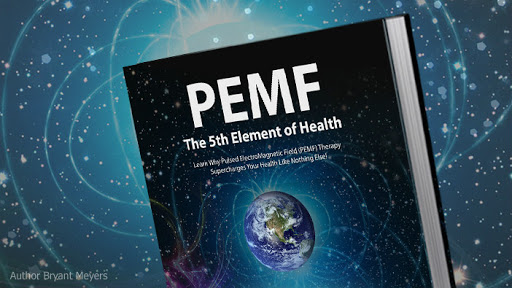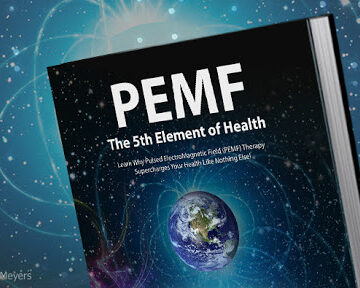To review, here’s a definition of the Hormesis Effect: A bi-phasic dose response to an environmental agent. This is like an inverted u-curve. It’s characterized by a low dose stimulation, or beneficial effect, and a high dose inhibitory, or toxic effect. Hormesis is application of a stressor that results in recoverability and creates more strength, better health, more fertility, and longer life.

Let’s take a look at the Hormesis Effect and Low Light Laser Therapy. And then we’ll see the correlations it has in PEMF Therapy. Low Light Laser Therapy works by hormesis by invoking your body’s stress response, specifically nitric oxide, and the free radical pathways. Like any kind of natural tool (or hermetic tool) it’s wise to use laser therapy prudently.

There’s a lot of research. Michael Hamblin at the Harvard Medical School is considered one of the world’s experts in Low Light Laser Therapy. I want to go over a few of his findings, because it’s well known that low doses work better than high doses. Lower intensities of laser light work better and have less side effects than higher intensities. So there is a frequency component.
The best wavelength for low light laser are around 810 nanometers. If you pulse the light with a frequency (such as 10 Hz., 100 Hz., or 1000 Hz.) they found that 10 Hz. was the most beneficial. Not only having a specific frequency that penetrates (810 nanometers is in your near-infrared spectrum) but also pulsing the light at basically an Earth frequency (10 Hz.) seems to work the best. That’s why they call it LLLT (Low Light Laser Therapy).

The research of Michael Hamblin and others has shown that the best results come from just a few joules per square centimeter. Once you get up to 50-100 joules or higher, it becomes detrimental or harmful. This is one of the best examples in energy medicine that more is not better. If you go to any conference on Low Light Laser Therapy you will hear about hormesis over and over again. This has been verified in many laboratories around the world. It’s not a question of whether this is true; it’s been proven to be true. It really makes sense. When you use higher intensities, you end up releasing more active oxygen species and more nitric oxide. Nitric oxide has benefits for vasodilation and circulation. But high levels of nitric oxide have adverse effects. They can compete with oxygen at certain sites within the electron transport chain making ATP. Research has shown that a few joules per square centimeter works the best. You get the best benefits and no side effects.

As an aside, let’s look at Low Light Laser Therapy versus PEMF Therapy. There’s a published study by the American Journal of Research Communication that put LLLT and PEMF head-to-head for the inactivation of myofascial trigger points (referred pain). The study found that PEMF induces tiny electrical signals that stimulate cellular repair, suppressing the inflammatory response, alleviating pain, and increasing the range of motion of the patient studied. The benefits of Low Light Laser Therapy were not as profound as PEMF Therapy for pain relief, and tissue healing and regeneration. However, both do work.
Let’s look at the Hormesis Effect in PEMF Therapy. It mirrors very closely the research and results from Low Light Laser Therapy. For example, the 10 Hz. pulsing was the most effective for LLLT. A NASA study showed that the 10 Hz. pulse was the most effective for PEMF Therapy. Just as Low Light Laser Therapy literature showed that low intensities worked the best (and there were side effects with higher intensities), the NASA study showed that very low intensities seemed to work better for tissue healing and regeneration with PEMF Therapy.

Let’s look at the body-mind-Earth connection. I talk about this in detail in my book, PEMF – The 5th Element of Health. There’s a 0-30 Hz. window of frequencies that seems to be the ideal frequencies that our body and minds, tissues and cells, resonate to. There’s a peak at 7-8 Hz, which is the Schumann resonance. Addy and Bowin showed that there’s a window of frequency and intensity at the cell level. Roughly 0-30 Hz. is what PEMF frequency the cells ideally responded to. Siskin and Walker showed that applying PEMF to a range of different tissues in the 0-30 Hz. range had the ideal effect. Muscle, bone, and nerve tissue were all stimulated primarily within that 0-30 Hz. range.
A study by Dr. Zimmerman showed that we even emit these frequencies. He looked at Reiki healers. This was duplicated by Seto in Japan.
Finally there’s very well established brain state research. We know our brains operate from low delta to high beta, which is a 0-30 Hz. frequency window. Our consciousness, our brains, are really wired to the frequencies of the Earth. The Schumann resonance is 7.8 Hz. And the first three or four harmonics are all within 0-30 Hz. You’ll find a lot more detail about that in my book.
With regard to power and intensity, there’s good research in the NASA study that shows that “less is more” with PEMF. Lower intensities work better for healing and regeneration. The NASA study showed that a rapid, varying waveform (a saw tooth or square wave) and a low frequency (around 10 Hz.) and a low intensity (1-20 microtesla) was the most effective. That’s even lower than the static or DC intensity of the Earth’s magnetic field, which is 33-66 microtesla.

The next piece of evidence connecting the Hormesis Effect and PEMF Therapy is studies done by the International Commission on Non-Ionizing Radiation Protection (ICNIRP). They are a world-wide authority on safety related to electromagnetic energy. They found that safety depends on intensity and frequency. This is right within that 0-30 Hz. range; up to 5,000 microtesla is safe, but not necessarily the most effective. The body can handle slightly higher intensities with the lower frequencies of the Earth. If you use a frequency above 25 Hz. then anything over 5 microtesla is not necessarily good for the body.
With PEMF Therapy, just like laser therapy, the Hormesis Effect is both frequency and intensity dependent. Assuming you’re using a low frequency, the lower intensities seemed to work best. This chart summarizes that.

Let’s talk about the myths of high intensity PEMF. More is not better in PEMF therapy, and the Hormesis Effect shows this. More is not better, better is better. The more is better mentality is very pervasive in our society. It’s the super-size me, give me more, mentality that gets us into a lot of trouble.
Trying to use high doses and high intensities PEMF is a very forceful approach that back-fires in the long run. Why? Because the body has to defend against this external force which takes it out of its natural healing abilities. The thing about these high intensity PEMF systems is that some of them use ridiculously high intensities; upwards of 2 tesla. That’s almost 100,000 times than the natural static field of the Earth. I refer to these high intensity PEMF devices as allopathic energy medicine because they use a symptomatic approach healing pain. It’s not necessarily healing the body faster, but it can symptomatically heal the pain. But the low intensity systems do that as well, and a lot more safely.
In conclusion the Hormesis Effect is one of the most important principles to understand in alternative healing, energy medicine, and PEMF Therapy. It dispels the myth that a higher dose will work better; that a larger amount will do more good, or inn the case of PEMF Therapy, the myth that more power or higher intensities work better. They don’t.
Just as Low Light Laser Therapy has shown beyond a shadow of a doubt, higher intensity causes more damage and has less benefits. With this same understanding that the low light laser community has discovered, it is my hope that with understandings of the frequencies and intensities of the Earth, the copious studies on low intensity PEMF systems, and the regulatory guidelines of the ICNIRP, that the PEMF industry will follow what the laser industry has done and promote low-intensity PEMF devices as the safest and most effective option, especially for home use.




